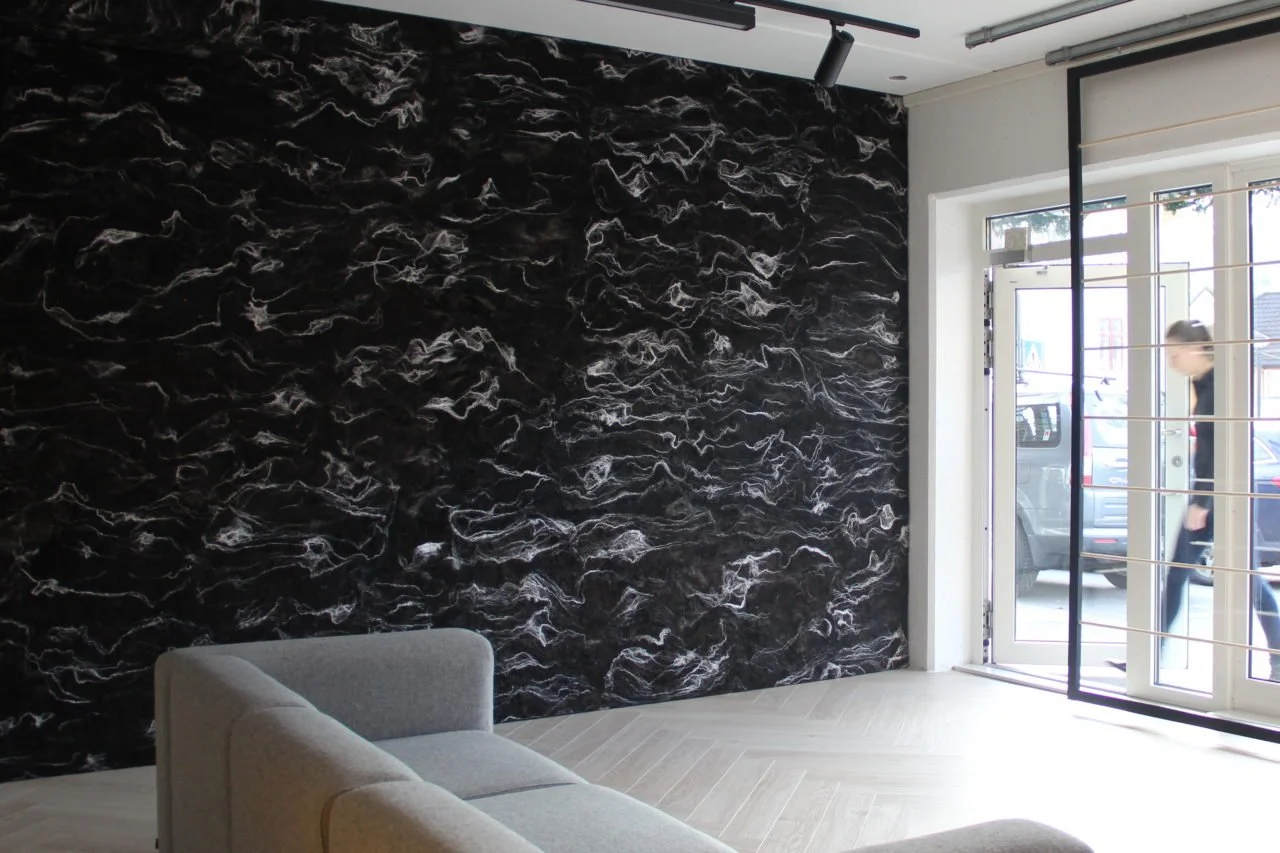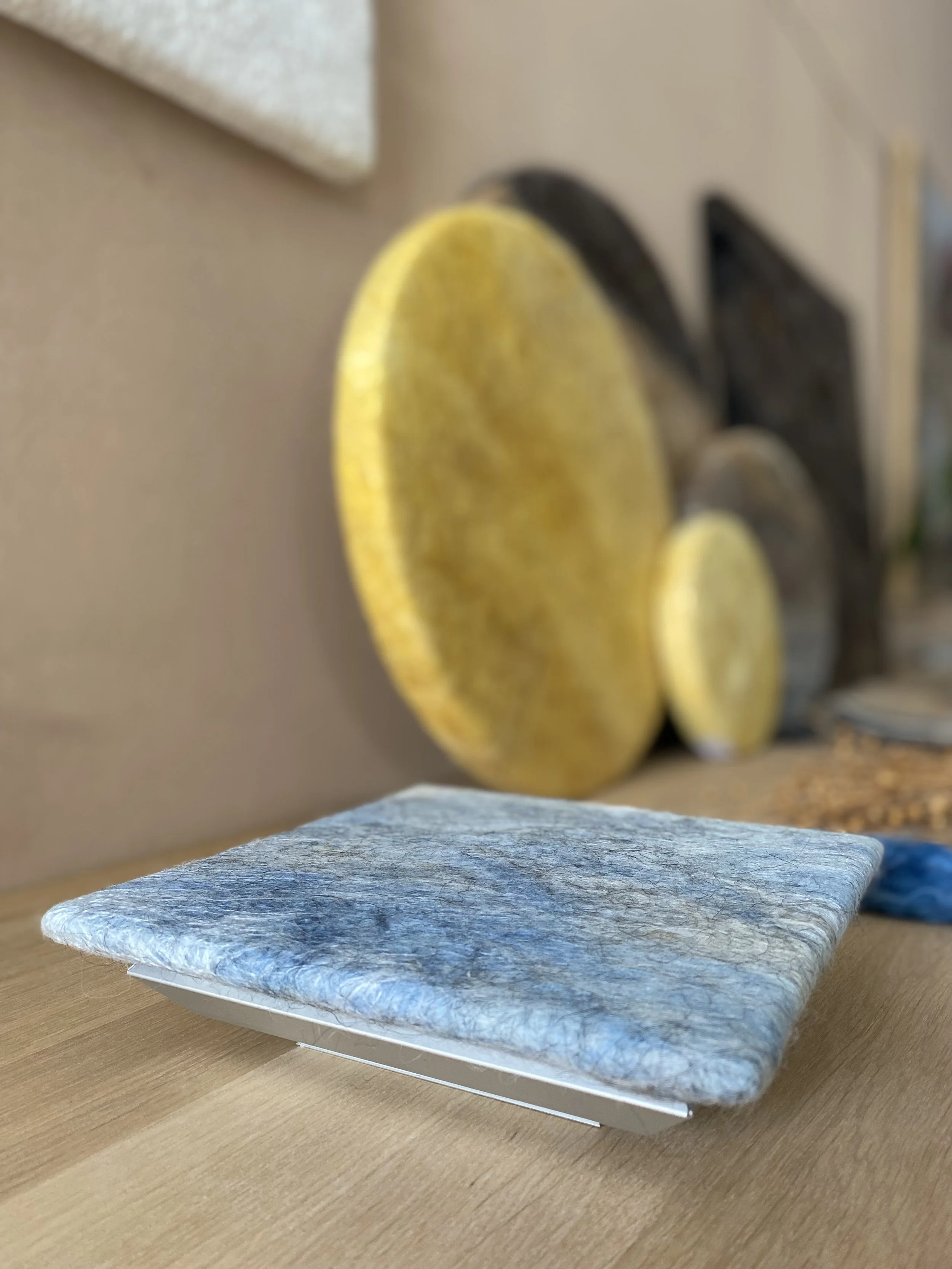Handmade wool felt
Our wool felt textiles are constructed from several layers of wool from the Old Norwegian Sheep combined with silk, wool from the Norwegian Pels sheep and merino wool. The thickness of the wool felt textiles varies from approx. 3-7 mm.
Plant dyes
Any additional color in our panels comes from 100% organic dyes, extracted from Norwegian flora, including moss, mushrooms and other plant species found in nature, and also plant dyes from other countries.
Oak frame
The frames are filled with 40 mm wool insulation
Visible dimensions: 20 x 50 mm
Hidden frame
The hidden frames are constructed of plywood and filled with 40 mm wool insulation.
Assembly
The frames are equipped with an angled edge on the back of the frame. This allows the frame to be hung on a mounting strip on the wall.
Standard frame sizes
We have three standard frame sizes. These are 60x90 cm, 90x90 cm and 120x90 cm.
Wall installation
The wool felt textiles can be mounted directly on any wall.
Details for assembly will be provided depending on the project.
Soft Cells - Kvadrat Acoustics
Flokk & Fjell wool felt textiles can be mounted on Soft Cells, a product from Kvadrat Acoustics.
Qualities of wool in interior design
Qualities of wool from Old Norwegian sheep in interior design:
Sound absorption: Wool also has good sound absorption properties, which reduces noise in a room and contributes to a quieter and more comfortable acoustic environment. Our products have documented class AD sound absorption for SS-EN ISO 354:2003 and SS-EN ISO 11654:1997
Moisture regulation: Wool has inherent moisture-wicking properties that help regulate the humidity in a room by absorbing excess moisture and releasing it back into the air when needed, contributing to a healthier indoor environment.
Durability: Wool is naturally durable and resistant.
Fire resistance: Wool is a natural fire-retardant material that is widely used in various applications such as interior textiles, carpets and insulation. Wool has excellent fire-retardant properties. It has a high ignition temperature and burns slowly, making it less prone to catching fire quickly. Wool produces minimal smoke and does not drip when burning, which reduces the spread of fire. Wool has the ability to char rather than melt, so its structure is retained and provides protection against fire.
Self-cleaning: Wool fibers contain lanolin, a natural wax that repels dirt and dust, making wool naturally resistant to soiling. This self-cleaning property minimizes the need for frequent maintenance, making wool a practical choice for interiors.
Natural aesthetics: Biophilic design incorporates natural elements into indoor environments to increase well-being, creativity and productivity. Wool, as a natural material, contributes to this by creating a sense of comfort and reducing stress.
The use of wool from Old Norwegian Spælsau is sustainable for several reasons.
Adaptation to the local environment : Old Norwegian sheep are a traditional Norwegian breed that has evolved over centuries to thrive in the rugged and varied Norwegian landscape. Their ability to withstand harsh weather conditions and utilize feed sparingly makes them well suited for out-of-the-way grazing, minimizing the need for supplementary feed and medication.
Low environmental impact : These sheep have a minimal impact on the environment due to their grazing habits. They are known for their ability to maintain pastures without causing excessive damage, unlike other livestock breeds that can overgraze pastures. This helps to preserve biodiversity and soil quality.
Genetic diversity : By breeding Old Norwegian Spæls sheep, farmers help preserve the genetic diversity of the livestock population. Traditional breeds often have unique genetic traits that can be valuable for breeding programs aimed at improving resistance to diseases and environmental stressors.
Preservation of cultural heritage : Raising old Norwegian sheep helps preserve Norwegian cultural heritage. The sheep are an integral part of Norwegian agricultural traditions and play a role in maintaining the cultural landscape and traditional farming methods.
Sustainable wool production : Old Norwegian spæls sheep produce wool that is valued for its quality and durability. Sustainable wool production methods, such as humane shearing and environmentally friendly wool treatment, are used to ensure that the production process has minimal negative impact on the environment.
Supporting the local economy : By raising Old Norwegian Spæls sheep, farmers can contribute to the local economy by producing high-quality meat and wool products. This supports small-scale agriculture and helps sustain local communities.








